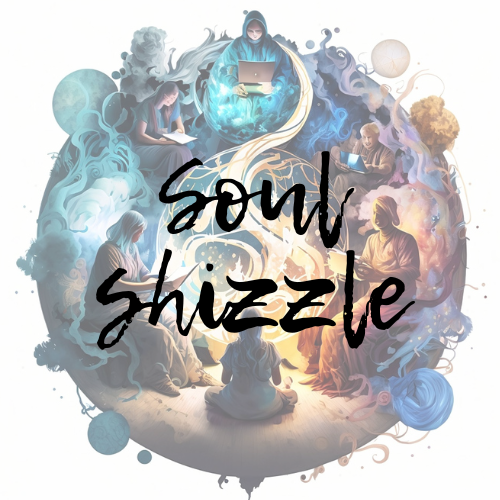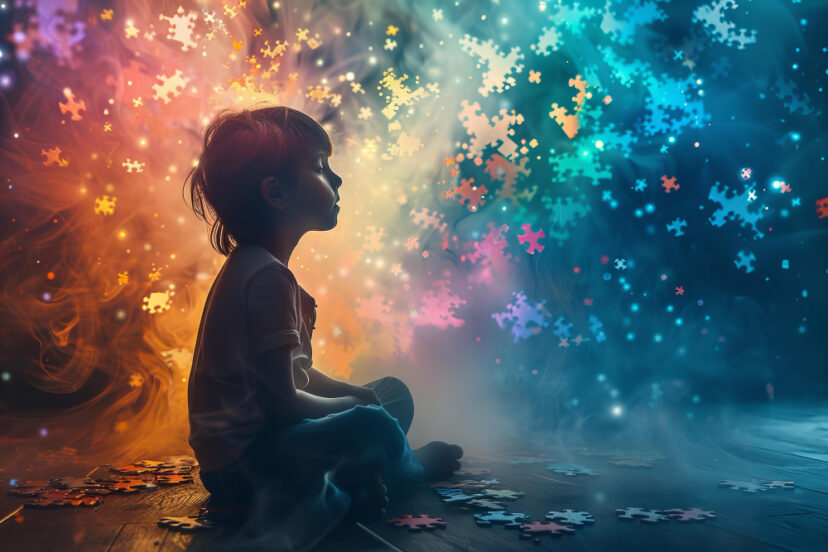Inner Child Healing
Healing Your Inner Child: A Journey Towards Wholeness
Healing your inner child is a profound process that addresses the unresolved emotional wounds and unmet needs from your childhood. This journey is essential for personal growth and emotional well-being, as it allows you to reconnect with your most authentic self, uncover buried feelings, and foster self-compassion. Let’s delve into the concept of the inner child, explore the significance of healing this aspect of yourself, and provide practical steps to embark on this transformative journey.
Understanding the Inner Child
The Concept of the Inner Child
The inner child is a psychological and emotional concept representing the childlike aspects within each of us. This includes our childlike wonder, innocence, creativity, and joy, as well as our childhood wounds, fears, and unmet needs. The inner child holds the key to our emotional memories and experiences from early life, influencing our thoughts, behaviors, and emotional responses in adulthood.
Why Healing the Inner Child Matters
Healing your inner child is crucial because unresolved childhood wounds can manifest as various emotional and psychological issues, such as anxiety, depression, low self-esteem, and relationship difficulties. By addressing these wounds, you can break free from negative patterns, improve your emotional health, and foster a deeper sense of self-acceptance and inner peace.
The Impact of Childhood Experiences
Early Attachment and Emotional Development
Our early childhood experiences, particularly our attachment to primary caregivers, significantly shape our emotional development. Secure attachment leads to healthy emotional regulation and a positive self-image, while insecure attachment can result in emotional difficulties and negative self-perceptions.
The Role of Trauma
Childhood trauma, whether from abuse, neglect, or other adverse experiences, can leave deep emotional scars. These traumatic experiences can create distorted beliefs about ourselves and the world, leading to patterns of self-sabotage and emotional distress in adulthood.
Signs That Your Inner Child Needs Healing
Recognizing the signs that your inner child needs healing is the first step towards transformation. Here are some common indicators:
Emotional Triggers
If you find yourself disproportionately upset by certain situations or people, it may be a sign that your inner child is reacting to unresolved past wounds.
Self-Sabotaging Behaviors
Patterns of self-sabotage, such as procrastination, perfectionism, or self-destructive behaviors, often stem from unmet childhood needs and unresolved emotional pain.
Difficulty in Relationships
Struggles with intimacy, trust, or maintaining healthy boundaries in relationships can indicate inner child wounds that need attention and healing.
Persistent Feelings of Inadequacy
Feelings of not being “good enough” or chronic self-criticism often originate from childhood experiences of rejection, criticism, or unmet emotional needs.
Steps to Healing Your Inner Child
Acknowledge and Validate Your Inner Child
The first step in healing your inner child is to acknowledge its presence and validate its feelings. This involves recognizing the childlike aspects within you and understanding that your emotional responses are valid and worthy of attention.
Reconnect with Your Inner Child
Reconnecting with your inner child requires creating a safe and nurturing space for it to express its needs and emotions. This can be done through visualization exercises, journaling, or creative activities that allow you to tap into your childlike essence.
Address Unresolved Emotions
Healing your inner child involves addressing unresolved emotions from your past. This means allowing yourself to feel and process emotions such as anger, sadness, fear, and shame that were suppressed during childhood.
Practice Self-Compassion
Self-compassion is a crucial component of inner child healing. Treat yourself with the same kindness, understanding, and patience that you would offer to a young child. This helps to counteract the negative self-beliefs and critical inner voice that often accompany childhood wounds.
Establish Healthy Boundaries
Setting healthy boundaries is essential for protecting your inner child and fostering a sense of safety and respect. This involves recognizing and honoring your own needs and limits, as well as asserting yourself in relationships and situations that may trigger old wounds.
Seek Professional Support
Working with a therapist or counselor who specializes in inner child work can provide valuable guidance and support on your healing journey. Professional help can assist you in navigating complex emotions, uncovering deep-seated beliefs, and developing effective coping strategies.

Techniques for Healing Your Inner Child
Inner Child Meditation
Inner child meditation involves guided visualization exercises that help you connect with and nurture your inner child. This practice allows you to create a safe space for your inner child to express its needs and emotions, fostering a sense of love and acceptance.
Guided Visualization Example
Find a Quiet Space: Sit or lie down in a comfortable position and take a few deep breaths to relax.
Visualize Your Inner Child: Imagine a safe and peaceful place where you meet your inner being. Picture your younger self and observe their appearance, emotions, and body language.
Communicate with Your Inner Child: Engage in a compassionate dialogue with your self. Ask them how they feel, what they need, and how you can support them.
Provide Comfort and Reassurance: Offer words of love, understanding, and reassurance to your self. Let them know that they are safe, valued, and loved.
Journaling
Journaling is a powerful tool for healing. It allows you to explore and process your thoughts and emotions, gain insights into your childhood experiences, and express your child’s needs and feelings.
Journaling Prompts
Letter to Your Inner Child: Write a letter to this part of your being, expressing your love, understanding, and commitment to their healing.
Childhood Memories: Reflect on specific childhood memories and how they have influenced your current thoughts, behaviors, and emotions.
Emotional Triggers: Identify situations that trigger strong emotional reactions and explore the underlying childhood wounds that may be contributing to these responses.
Creative Expression
Engaging in creative activities, such as drawing, painting, or crafting, can help you reconnect with your inner being and express emotions that may be difficult to articulate through words. Creativity allows you to access your childlike wonder and joy, fostering a sense of playfulness and freedom.
Play and Recreation
Incorporating play and recreation into your life is essential for nurturing this part of you. Activities that bring you joy and allow you to engage in carefree, playful experiences can help you reconnect with your childlike essence and promote emotional healing.
Ideas for Playful Activities
Outdoor Adventures: Spend time in nature, exploring parks, hiking trails, or beaches. Engage in activities such as picnicking, flying kites, or building sandcastles.
Art and Craft Projects: Create art and craft projects that allow you to express your creativity and imagination. Consider activities such as painting, sculpting, or making collages.
Games and Puzzles: Play games and puzzles that challenge your mind and bring a sense of fun and enjoyment. This can include board games, card games, or solving jigsaw puzzles.
The Role of Forgiveness in Inner Child Healing
Forgiving Yourself
Before anything, start here. Forgive yourself for feeling the way you do. Forgiving yourself for past mistakes and shortcomings is a vital part of healing this important part of yourself. Recognize that you were doing the best you could with the resources and knowledge you had at the time. Self-forgiveness allows you to release guilt and shame, paving the way for self-acceptance and growth.
Forgiving Others
Forgiving those who have hurt you, especially caregivers or significant figures from your childhood, can be a challenging but essential step in inner child healing. You do not need to do this for them. Forgiveness does not mean condoning their actions; rather, it involves letting go of the emotional burden and reclaiming your power. This process can free you from the grip of past wounds and open the door to emotional liberation.
The Benefits of Healing Your Inner Child
Improved Emotional Well-Being
Healing your inner self can lead to significant improvements in your emotional well-being. By addressing unresolved childhood wounds, you can experience greater emotional balance, reduced anxiety and depression, and increased self-esteem and confidence.
Enhanced Relationships
As you heal this part of you, you are likely to experience positive changes in your relationships. Improved emotional regulation and self-awareness can lead to healthier boundaries, better communication, and deeper connections with others.
Greater Self-Compassion and Acceptance
Healing this part of you fosters a deeper sense of self-compassion and acceptance. By embracing your inner needs and emotions, you cultivate a loving and nurturing relationship with yourself, promoting overall mental and emotional health.
Personal Growth and Empowerment
The journey of healing your inner self is a powerful path to personal growth and empowerment. By confronting and transforming childhood wounds, you can break free from limiting beliefs and patterns, allowing you to step into your fullest potential and live a more authentic and fulfilling life.
Integrating Inner Child Healing into Daily Life
Mindful Self-Reflection
Regularly engaging in mindful self-reflection can help you stay connected with this part of you and monitor your emotional well-being. Set aside time each day to check in with yourself, acknowledge your feelings, and address any unmet needs.
Nurturing Activities
Incorporate nurturing activities into your daily routine to support your healing. This can include practices such as meditation, journaling, creative expression, and play. Prioritize self-care and engage in activities that bring you joy and fulfillment.
Building a Support System
Surround yourself with supportive and understanding individuals who can provide encouragement and validation on your healing journey. Building a strong support system can help you navigate the challenges of this important work and celebrate your progress.
Healing your inner child is a transformative journey that can lead to profound personal growth, emotional healing, and spiritual development. By acknowledging and nurturing this part of you, you can address unresolved childhood wounds, foster self-compassion, and reclaim your authentic self. This process involves reconnecting with your childlike essence, addressing unresolved emotions, and integrating healing practices into your daily life. With commitment and patience, you can heal yourself and create a life filled with greater emotional well-being, healthy relationships, and personal empowerment.
We may earn a commission for purchases made using our links. Please see our disclosure to learn more.




